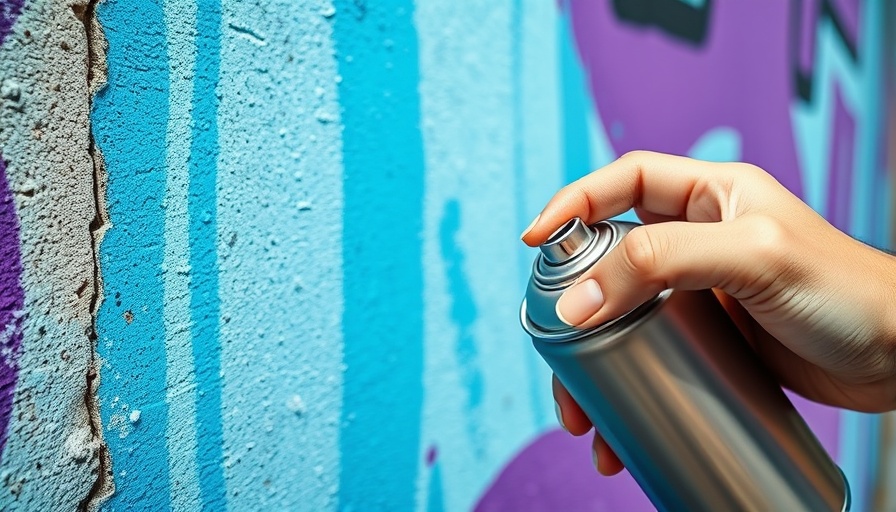
Mastering Spray Painting: Your Ultimate Guide
Spray painting can often appear deceptively simple—just pick up a can, shake it, and start spraying. However, there’s far more to achieving a flawless finish than mere technique. To help you gain a professional look and avoid common mishaps, we've gathered not just the basics but also expert insights to enhance your DIY projects. This guide is tailored for homeowners looking to refresh their spaces or embark on new creations.
The Right Materials Matter: Choosing Paint for Plastic
One common misstep in spray painting is failing to select the appropriate type of paint for different surfaces. For instance, typical spray paints struggle to bond with plastic. Instead, opt for specialized products like Krylon Fusion for Plastic or Rust-Oleum 2x, which are designed to create a robust fusion with plastic surfaces. This choice not only ensures longevity but also enhances the aesthetic quality of your project.
Patience Pays Off: The Importance of Technique
To avoid unsightly runs in your paint job, the technique truly matters. It’s crucial to apply light coats and allow proper drying time before layering further paint. Instead of randomly dipping back and forth across your project, implement a methodical approach. Begin with vertical surfaces and keep the spray at a consistent motion to enable even coverage. You’ll find that allowing each section to dry can spare you from laborious sanding later, which can diminish your weekend’s DIY satisfaction.
Overlapping and Consistency: Key to a Smooth Application
When applying spray paint, the way you overlap your strokes can significantly impact the outcome. Aim for a 50% overlap of each pass with the spray. This means that each new pass of paint should cover about half of the previously sprayed area, ensuring even coverage without visible stripes.
The Right Motion: Avoiding Swinging Arcs
One of the most common techniques mishaps is the instinctive swinging arc motion. This method can lead to uneven paint distribution, with thick patches in the center and lighter coverage on the ends. Instead, keep your motions parallel to the surface while maintaining steady, straight movements. This will lead to a more uniform finish.
Protect Yourself: The Essential Gear for Safety
While spray painting can be enjoyable, it's crucial to prioritize your health during the process. Using cans can release harmful solvents and fine mist into the air, negatively affecting your lungs. Always wear a proper respirator equipped to filter organic vapors. For additional safety, open windows and doors if you’re indoors to allow for adequate ventilation. Although it may be tempting to paint outside, be cautious of wind, bugs, and falling debris that could ruin your finish.
Using Tools for Better Control: Invest in a Trigger Handle
Do you often find your fingers sore after multiple spray painting sessions? A trigger handle can make a significant difference. Not only does it ease finger strain, but it also grants you improved control over the spray can, allowing for more precision in your technique. This small investment is worth it for those tackling larger projects.
A Quick Recap: Essential Steps for Successful Spray Painting
Remember these vital steps before diving into your next spray painting task: choose the right paint for your materials, be patient with drying times, maintain a consistent motion, and always prioritize your safety. With these guidelines, you’ll not only enhance the quality of your projects but also enjoy the process of DIY home improvement.
Your Next Steps for Successful DIY Painting
Feeling ready to start your spray painting project? Gather your materials, ensure your workspace is clean and protected, and consider implementing the strategies outlined here. Embrace the satisfaction of a job well done, knowing you've armed yourself with expert tips and safety measures. Dive into your home DIY projects confidently and let your creativity soar!
 Add Row
Add Row  Add
Add 



Write A Comment